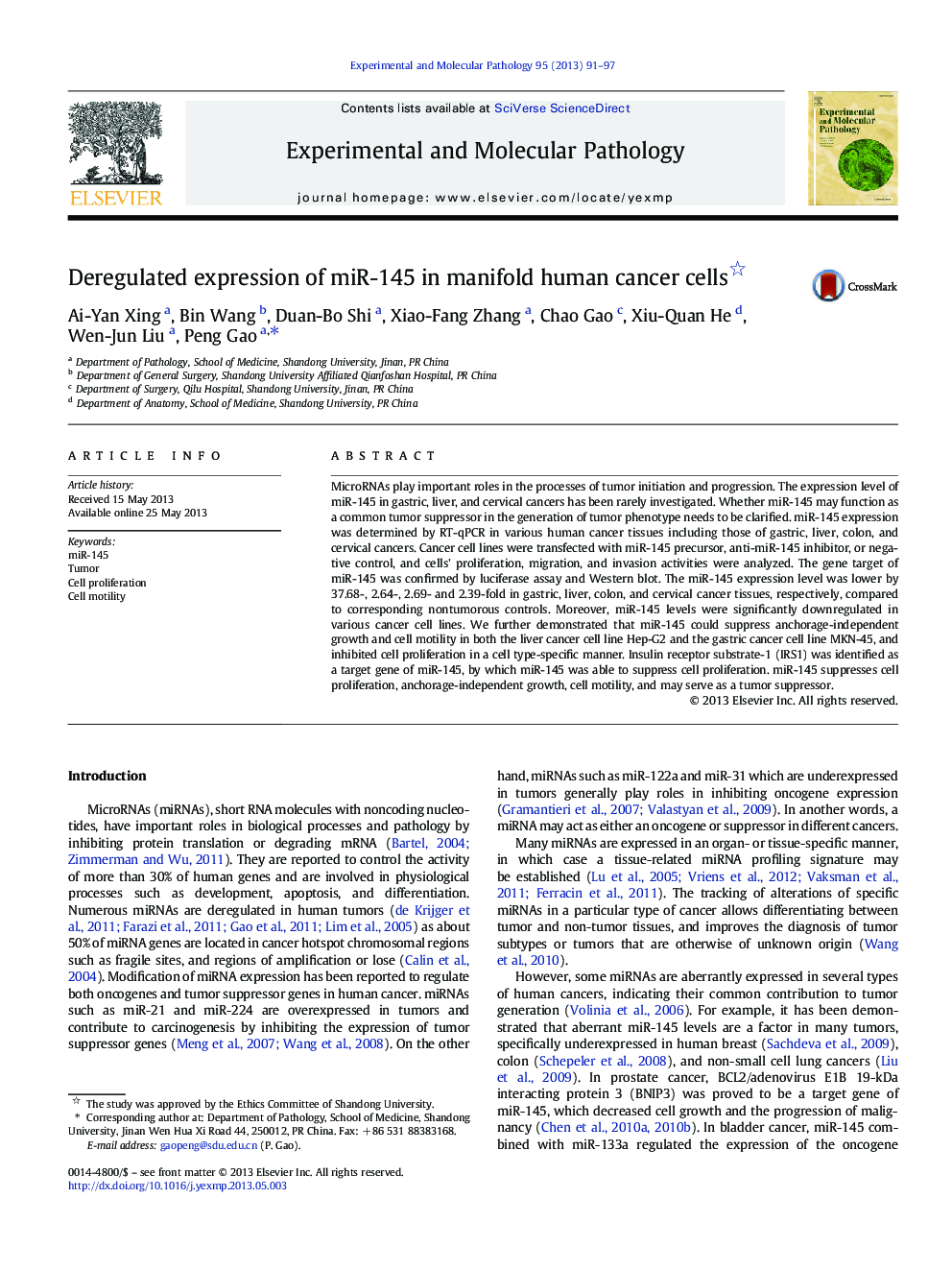| Article ID | Journal | Published Year | Pages | File Type |
|---|---|---|---|---|
| 2775328 | Experimental and Molecular Pathology | 2013 | 7 Pages |
Abstract
MicroRNAs play important roles in the processes of tumor initiation and progression. The expression level of miR-145 in gastric, liver, and cervical cancers has been rarely investigated. Whether miR-145 may function as a common tumor suppressor in the generation of tumor phenotype needs to be clarified. miR-145 expression was determined by RT-qPCR in various human cancer tissues including those of gastric, liver, colon, and cervical cancers. Cancer cell lines were transfected with miR-145 precursor, anti-miR-145 inhibitor, or negative control, and cells' proliferation, migration, and invasion activities were analyzed. The gene target of miR-145 was confirmed by luciferase assay and Western blot. The miR-145 expression level was lower by 37.68-, 2.64-, 2.69- and 2.39-fold in gastric, liver, colon, and cervical cancer tissues, respectively, compared to corresponding nontumorous controls. Moreover, miR-145 levels were significantly downregulated in various cancer cell lines. We further demonstrated that miR-145 could suppress anchorage-independent growth and cell motility in both the liver cancer cell line Hep-G2 and the gastric cancer cell line MKN-45, and inhibited cell proliferation in a cell type-specific manner. Insulin receptor substrate-1 (IRS1) was identified as a target gene of miR-145, by which miR-145 was able to suppress cell proliferation. miR-145 suppresses cell proliferation, anchorage-independent growth, cell motility, and may serve as a tumor suppressor.
Related Topics
Life Sciences
Biochemistry, Genetics and Molecular Biology
Clinical Biochemistry
Authors
Ai-Yan Xing, Bin Wang, Duan-Bo Shi, Xiao-Fang Zhang, Chao Gao, Xiu-Quan He, Wen-Jun Liu, Peng Gao,
